Alternatives To Try!
White rice is a cheap and easily prepared starch that’s often used as a meal prep ingredient. It’s used all around the world in several dishes and cuisines. White rice may be popular, but there are other healthy alternatives to white rice that could change up your meals!
Of course, you can still enjoy white rice as part of a balanced diet, but there are much more nutritious foods available to try. Brown rice, quinoa, cauliflower rice, and sweet potato rice are just a few of the healthier alternatives which can help make a difference to your wellbeing.
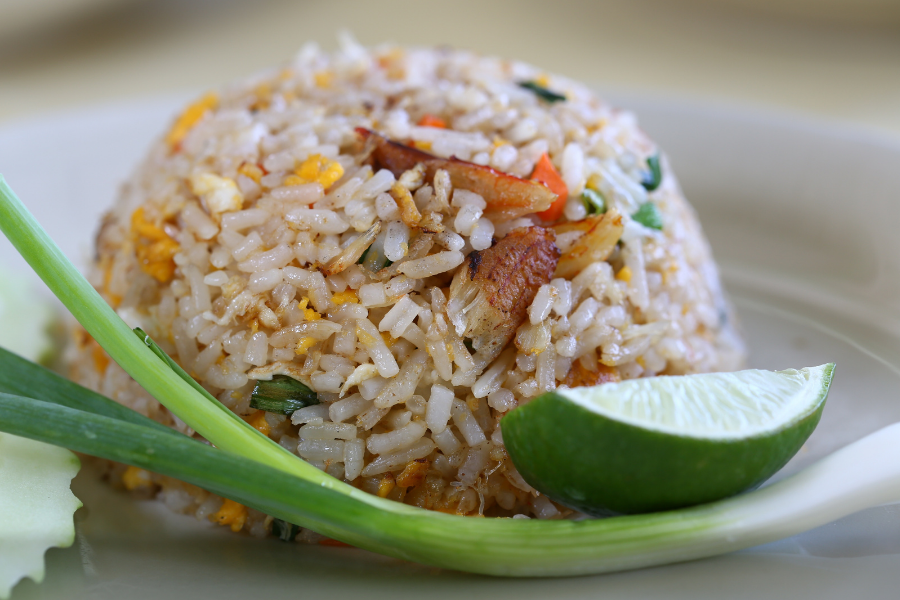
There are loads of white rice alternatives that each have unique health benefits. You’ll find a list of 17 white rice alternatives below. If you can’t even think about giving up white rice, we’ve also included some tips on how to make white rice more nutritious.
1. Brown Rice
Brown rice is one of the more obvious white rice alternatives, but it packs a punch! For slightly more calories than white rice, brown rice contains much more protein and fiber. Improving your intake of these substances can help reduce cholesterol and regulate your blood sugar.
Brown rice is a great carbohydrate source, so it’s a good food to have before exercise or the gym. It’s also good to have at lunch to reload your energy levels so you’re less tired throughout the day.
2. Cauliflower Rice
Cauliflower rice has become more popular over the years, and for good reason! When ground down, this vegetable resembles white rice, but it is a lot better for you. Cauliflower is full of antioxidants and minerals which can keep your skin clear and healthy.
Cauliflower rice is a good alternative for those looking to lose a little weight, as it contains much fewer calories than rice for the same volume. You can add some spices and herbs to make it tastier, but it also works well in wraps or alongside homemade curry.
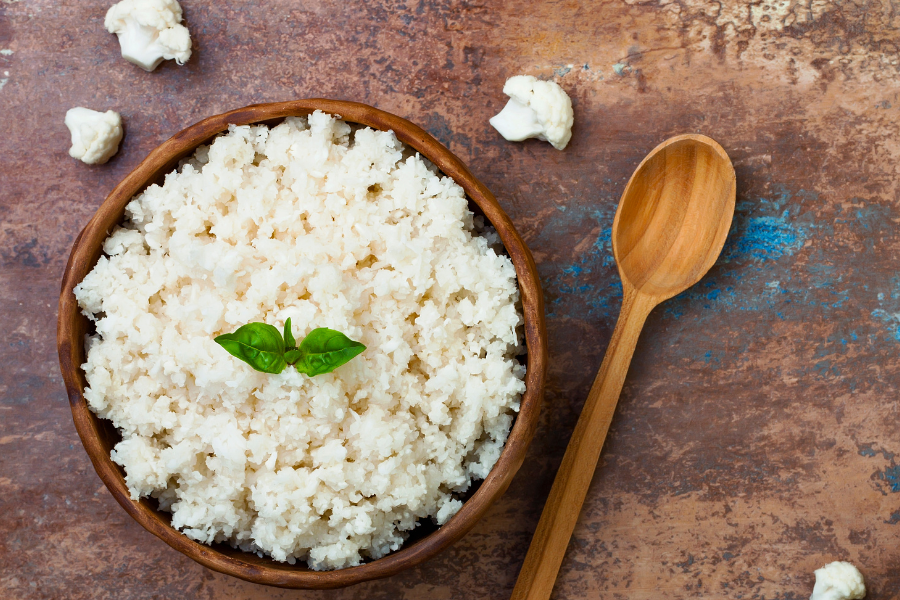
3. Cabbage Rice
Cabbage rice may not be popular, but cabbage’s light flavor makes it great to grind down into rice! Cabbage is full of vitamin K, a vitamin that maintains calcium within your blood. It also contains vitamin C which is good for your skin and immune system. You can make cabbage rice by breaking it down in a food processor. Just make sure that you don’t blend it down too much, as it may become a smoothie instead!
4. Edamame Pasta
Edamame isn’t just a white rice alternative, it’s a good substitute for white pasta too. Edamame contains a decent amount of fiber and protein, which may be useful to vegans or vegetarians trying to increase their protein intake.
Once you add a hearty sauce, edamame pasta tastes just like its white counterpart, but it has a lot more nutritious benefits! It’s naturally gluten-free too, so it is suitable for a range of dietary needs.
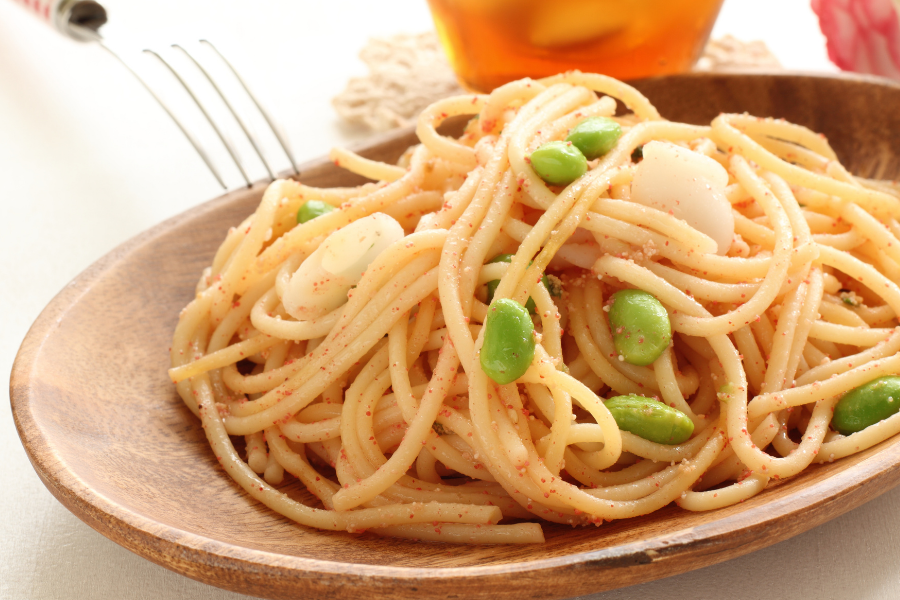
5. Sliced Zucchini
If you’ve never thought about turning zucchini into rice before, you’re missing out! Zucchini is full of vitamins and minerals. These have several health benefits, like regulating the thyroid, improving bone density, and reducing the risk of certain cancers.
You can chop zucchini down until it resembles rice, or use some slices to make a healthier lasagna. Either way, it’s a great vegetable that can improve your overall well-being. Zucchini can also soothe the digestive system, so it’s a nice white rice alternative for those with IBS or gastrointestinal issues.
6. Riced Broccoli
Broccoli is a staple vegetable, but it can also be chopped to create a lower-calorie rice substitute. Broccoli contains important nutrients, like vitamin K, C, and E. These can improve your immune system, but they’re also known for clearing up skin and making it glow.
White rice can’t be frozen and reheated, but broccoli rice can. This makes it good to include in meal plans throughout the week or store for use later.
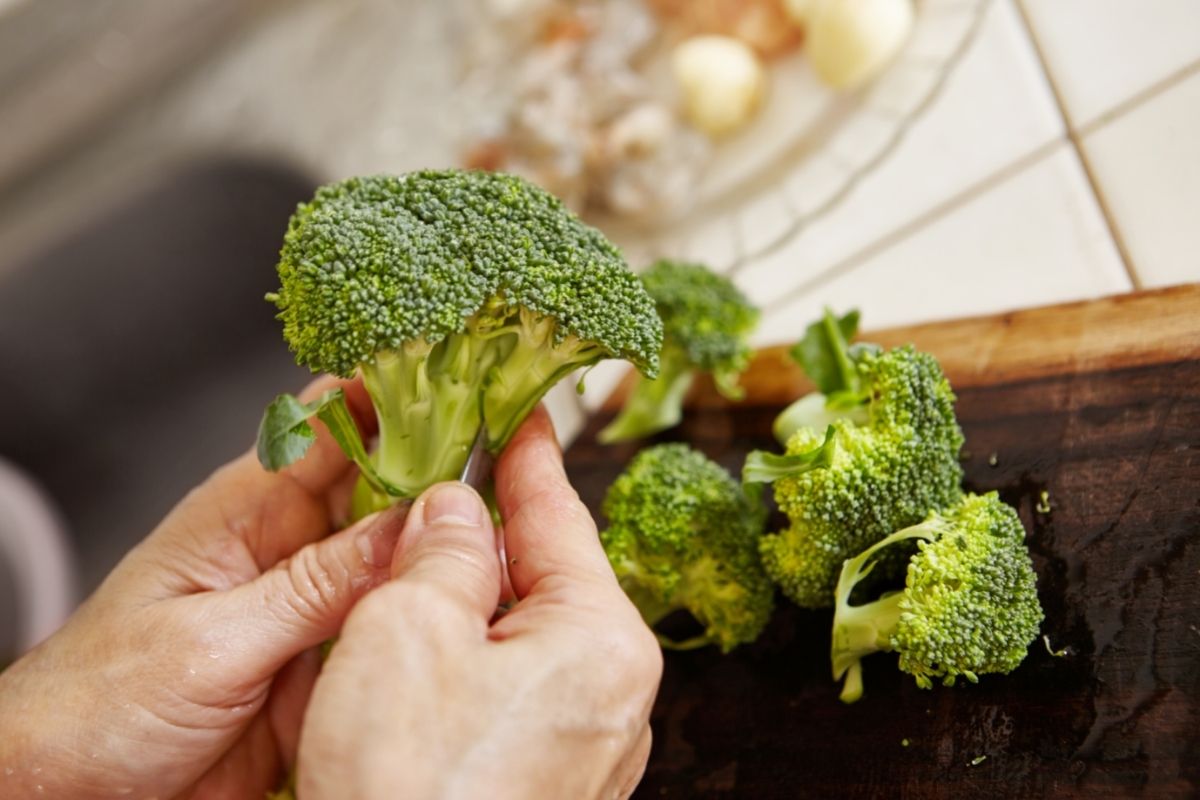
7. Farro
This nutty grain is higher in fiber than quinoa and brown rice! It’s easily digested and delivers a great dose of zinc, vitamin B, and magnesium. These nutrients can keep your immune system in shape and can help maintain the strength of your muscles.
Farro is full of protein too, so vegans or plant-based individuals may like to combine it with other grains to increase their protein intake. Farro is also nice to add with cream and fruit as a healthy dessert, but it also works well when eaten as a cereal in the morning.
8. Couscous
Couscous has a texture that’s similar to white rice, but it’s much lower in carbs and slightly lower in calories! Couscous is free from fat and sugar, so it’s a great staple food to include in your meals.
Moroccan couscous in particular is full of protein and fiber. This means that it’s great to have after a workout to refill your energy levels and keep your muscles strong. You can add couscous into salads or use it in place of rice alongside a curry.

9. Mushroom Rice
You’ve heard of cauliflower rice, but what about mushroom rice? Mushrooms are very low in calories but they are packed with nutritious benefits! Mushrooms are full of B vitamins which are great for low energy levels. B vitamins are also important for keeping the heart healthy, but they also help to promote healthy skin.
You can chop some mushrooms up into fine pieces as a substitute for rice. They have a pleasant flavor that works well in many dishes but do be careful if you plan on heating them for a while. Mushrooms can wilt and shrink when cooked, so keep an eye on them while you prepare your dish!
10. Bulgur
This is another food that’s full of fiber. Bulgur’s high fiber content means that it’s great for your gut. It’s easily digested which keeps intestinal issues at bay, but this may help with weight loss too.
Bulgur is also full of minerals and vitamins that can ward off chronic diseases. It’s relatively easy to cook with too, as it can be made into bread, added to stews, or sprinkled over salads.
11. Barley
Another whole grain that can help promote weight loss, barley is packed with fiber that keeps hunger pangs at bay. Compared to white rice, barley will keep you a lot more satisfied and satiated so you eat less overall.
Its high fiber content is good for your gut and can prevent digestive issues from occurring later down the line. Barley also contains beta-glucans which can help lower cholesterol levels and decrease the risk of heart disease.
12. Lentil Rice
Lentils are tasty and affordable, so they’re a great way to get some extra protein into your diet! Lentils are packed with important vitamins and minerals, but they also have fiber and protein that can help keep hunger pangs at bay.
They’re also good for those looking to lose weight, as lentils have much fewer calories compared to white rice! There are endless ways to enjoy lentils, as they can be eaten as a soup, made into curry, or processed into a rice-like substitute.
13. Wild Rice
Wild rice is a type of rice that has much lower calories than white rice. Wild rice is full of protein, fiber, and manganese which can keep your energy levels high throughout the day.
Wild rice can be used in place of white rice for many dishes. Enjoy it inside a wrap, mixed into a salad, or stuffed within peppers. The choices are endless!
14. Chickpea Rice
Chickpeas have many health benefits, but compared to white rice, they’re also more affordable and packed with flavor! As chickpeas are high in protein, they’ll help to keep your muscles strong after a long session at the gym.
Chickpeas are also lower in carbs and calories which can aid weight loss, but they’re also lower in sodium which can keep your heart healthy and strong.
Chickpea rice is a great white rice alternative that’s available in some specialty stores. You can also enjoy chickpeas cold in salads, roasted with vegetables, or mashed as houmous.
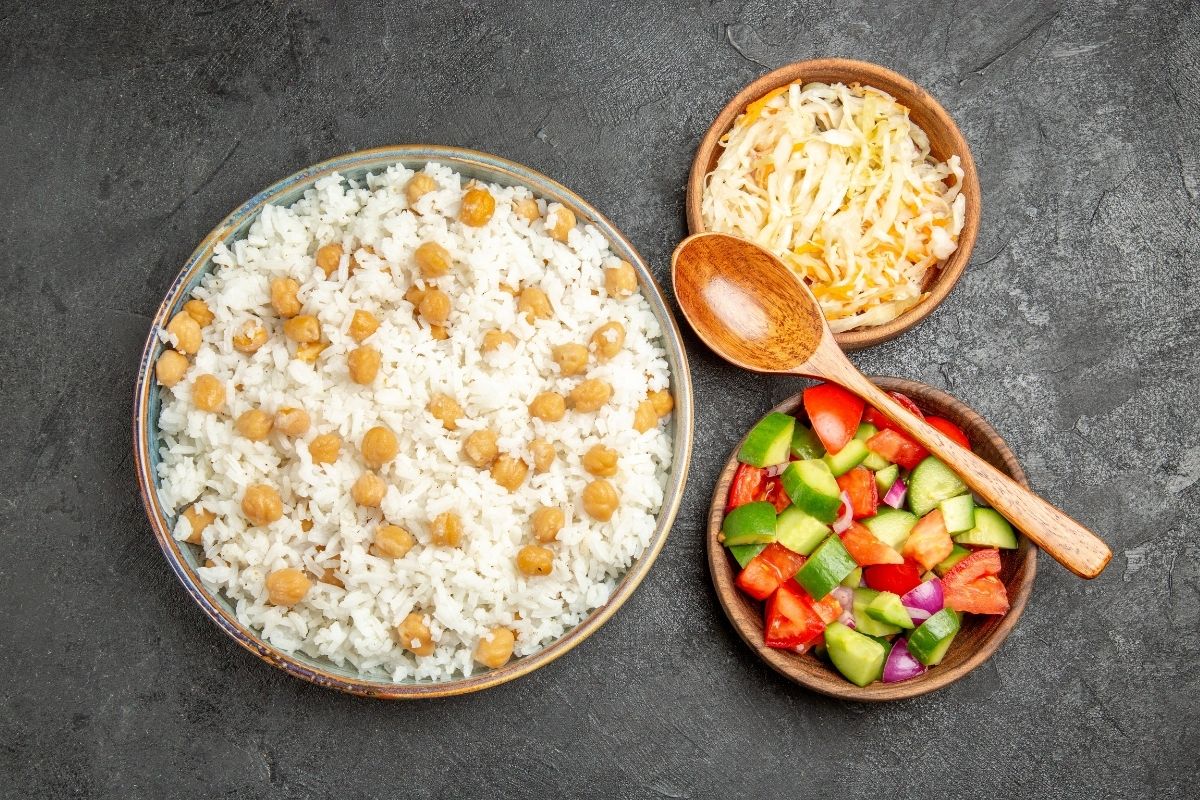
15. Buckwheat
Buckwheat is another white rice alternative that has a high protein content. Protein is a filling macronutrient that will keep you satiated for longer, which is great for those who want to lose weight.
Buckwheat also contains arginine and lysine, both amino acids that are important for children’s development. It’s great for all ages and as it’s naturally gluten-free, buckwheat is suitable for a range of diet plans too.
Try buckwheat roasted alongside some vegetables for dinner, or soak it in some non-dairy milk to make buckwheat porridge for breakfast.
16. Adlai
Adlai is low on the glycemic index (GI) scale, so it won’t raise your blood sugar as quickly as white rice does. It contains minerals like phosphorus, magnesium, and niacin, which make it one of the more nutritious carbohydrates available.
This whole grain contains fiber, protein, and complex carbohydrates which can keep your energy levels up throughout the day. Adlai is a good white rice substitute for those with busy schedules, people with intense jobs, or those who perform a lot of activity throughout the day.
17. Millet
You may know this ingredient as bird food, but millet is a great white rice alternative for humans! Millet is a good source of protein, with 11 grams of protein in every 100 grams. Research has also shown that it can help stabilize blood sugar levels to reduce the risk of diabetes. Data revealed that millet affected blood glucose much less than rice did.
You can spot millet from its pleasant yellow hue. This grain works well when stirred in porridge, but it goes well alongside lentils and vegetables too. You can add a few spices or herbs to make it savory, or add honey and fruit to make it sweet.
How To Make White Rice Healthier
If you can’t give up your white rice, here are some tips that can help make it slightly better for you.
Make sure to add lots of vegetables and herbs alongside the rice to increase the nutritional content of each meal.
Stick to 3/4-cup servings of cooked rice per meal, as it can be easy to eat slightly more than you need.
Lastly, add some meat or lentils alongside the rice so you consume a good amount of protein. Chicken works well in several rice dishes, but if you’re vegetarian or vegan, lentils or beans will be a good source of protein.
Conclusion
To sum up, there are plenty of white rice alternatives that are healthy and taste good. These substitute foods are normally available at your local grocery store and are usually more affordable too!
The white rice alternatives mentioned above are packed with important nutrients and minerals. Switching to one of these is a simple way of getting in more vitamins, fiber, and protein into your diet.
If you love white rice, you don’t have to give it up completely, but adding some vegetables and protein to it can make a big difference to your health. You shouldn’t have to forgo your favorite foods, but being mindful about what you’re consuming can help you feel better overall.
Hungry for more? Join our cooking clan here for exclusive content, giveaways, and delicious treats!!
We always want to be transparent and honest about our article content. From time to time, we may link to products and services that compensate us for the referral. This does not affect your cost, but it does help us fund future content for this site.
